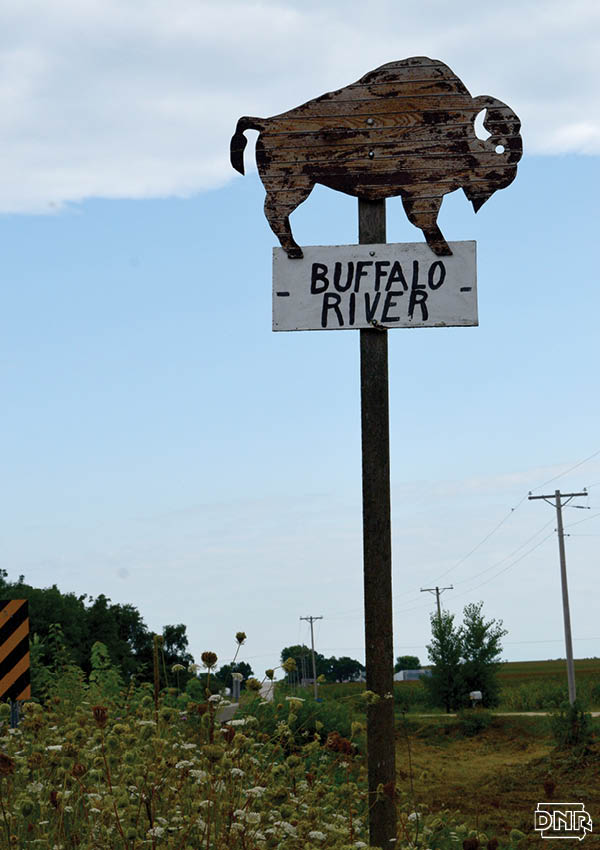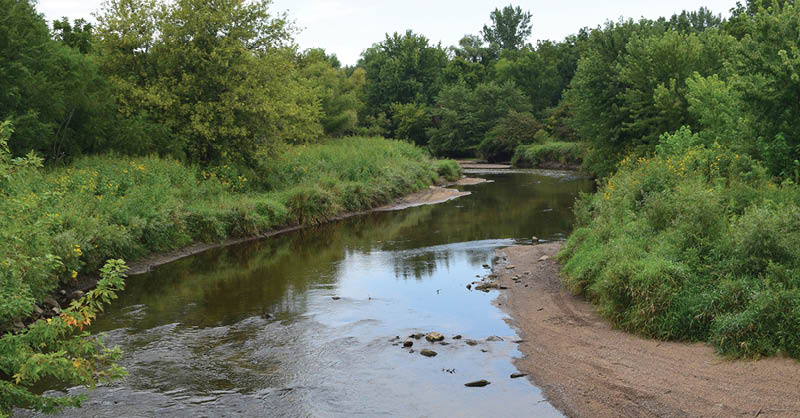COGGON, Iowa - Word is starting to spread across the hunting circles in east-central Iowa, about a new wildlife area surrounding Buffalo Creek, on the Linn, Buchanan and Delaware County line.
The 1,100-acre Buffalo Creek Wildlife Area is fast becoming the secret hotspot for deer, turkey, dove, pheasant, duck, squirrel and rabbit hunting. When hunting seasons close, the focus turns to mushrooms, kayaking, camping and bird watching.
While the area is still technically a teenager – getting pieced together since 2000 - wildlife biologist Curt Kemmerer has a vision for this place and improving the habitat and water quality.
It’s already attractive to threatened and endangered species including four listed mussels already in the stream, he said, and as it ages, Kemmerer believes it will attract other vulnerable species.
“The area has the characteristics that would be attractive to Blandings turtles and northern harriers,” he said. “We’ve documented the breeding success of sandhill cranes on a wetland here which is exciting.”

Hunters know the Buffalo
“It’s really a great example of an area where hunters can come here during any season and find game,” Kemmerer said. “Everything is here.”
Buffalo Creek boasts nearly every habitat. Grasslands, riverine, timber, sloughs and wetlands. He is in the process of adding water to flood a good crop of smartweed in a 25-acre wetland complex ahead of the duck season. Ducks like smartweed. Hunters use it to hide.
On the opposite side of the area is a dove field that has experienced increased hunter popularity each year. “The surrounding parking lots have been filled by 3 or 4 in the morning on opening day,” he said.
While it may not appear so, the young complex is still a work in progress.
Converting the flood prone former crop land into prairie takes time and can look like a weedy mess early on.
“During the first year of a seeding it looks ugly, but you expect it to look a certain kind of ugly. I was worried but patience has paid off,” he said. “It’s fun to see a prairie figure itself out.”
Gone is the corn and beans rotation and pasture land. In comes the compass plant, big bluestem, wild bergamot, Canada wild rye, little bluestem, site oats grama, Indian grass, partridge pea, pale purple coneflower, rattlesnake master, yellow coneflower, white prairie clover, mountain mint, white sage, and showy tick trefoil.
The transition from working land to wildland is also taking place in the timbered areas. Kemmerer said he is planning to manage the timber in three zones.
The north end in the grassland will be managed as a shrubby, woody thicket to provide a safe haven for rabbits, pheasants and other wildlife calling grasslands home. The middle section will focus on oak-hickory stand improvement, catering to deer, turkey, and squirrels. On the lower section, Kemmerer will take a hands-off approach and allow for older growth and natural succession. The lower end features wetter soils preferred by cottonwoods and willows.
“As you move down the corridor, you will notice the changes in the forest,” he said. “Birds should be able to find their niches here, from warblers to woodcock.”

From theory to practice
A 20-acre section of Buffalo Creek has been designed to include severe winter cover that has been promoted recently by pheasant experts.
The area is laid out in an L-shape with rows of brush and shrubs on the west side that will provide winter cover and travel lanes that are not likely to fill in regardless of the amount of snow and blowing snow. That escape cover is near food plots rotating between corn and sunflowers. The last part is a large field of switchgrass that pheasants use for roosting cover.
The trees and shrubs were planted by 10-12 volunteers from the Dubuque and Linn County Pheasants Forever chapters. The cedars and spruce are growing quickly.
“This should survive a bad winter,” Kemmerer said.
Food plots are not restricted to the severe weather pheasant cover. A local farmer has added 18 acres of food plots to different locations on the 1,100 acres. The food plots are left for two years and during the second year, it will come up with foxtail and ragweed which is exactly what Kemmerer wants.
Buffalo Creek
Buffalo Creek has a well-earned reputation for being a flash flood system where powerful floods would cause significant erosion. For generations the area alongside mid-sized tributary stream of the Wapsipinicon River would be farmed and grazed and fairly regularly it would be impacted by a flash flood. After the devastating flood in 1993, the farmers were fed up.
“We were really fortunate that our local conservationist with the Natural Resources Conservation Service office was able to step in with funds from the emergency watershed protection program and began enrolling the landowners to get rid of their headache. He had a vision of what this area could be,” Kemmerer said.
The stream itself has characteristics that should support a quality smallmouth bass population. The DNR is reviewing the potential of installing a fish passage or removing a low-head dam downstream that would improve fishing.
“The stream is large enough to float a kayak, but you may have to drag it a little, depending on the flows,” he said. “Floating it is a quiet, remote experience. The sandbars would be a nice place to camp. It’s very quiet, peaceful and wild.
